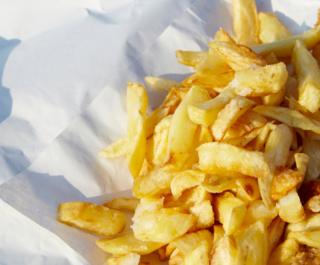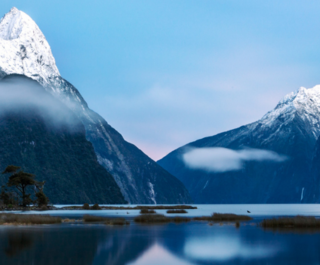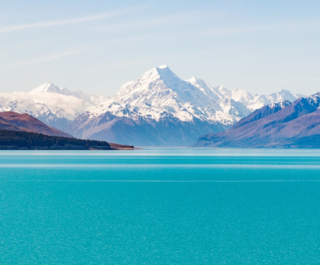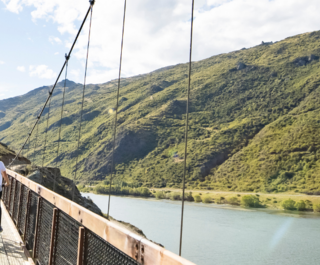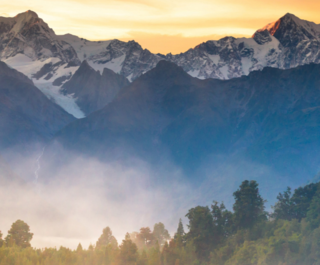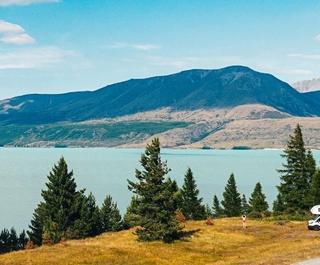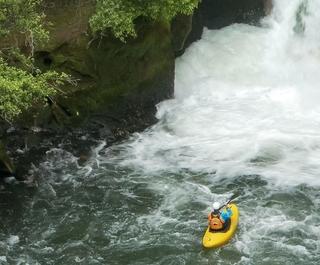
The beauty of driving around New Zealand is that you never know what you might find around the next corner. Driving south-west from Auckland on State Highway 2, the scenery becomes more and more picturesque as we travel through Ngatea, Paeroa and past the Waihou River at Tirohia.
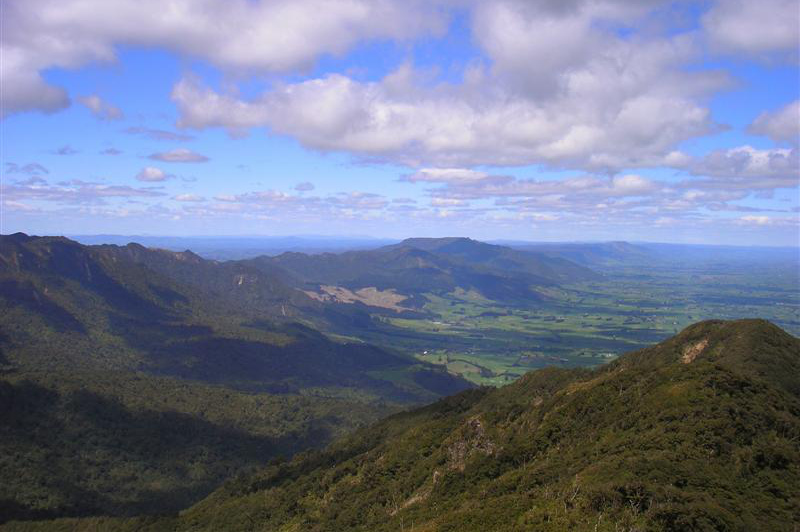 The view across farmlands from Mount Te Aroha. Image: Hamilton & Waikato Tourism
The view across farmlands from Mount Te Aroha. Image: Hamilton & Waikato TourismTen minutes south of Tirohia, driving amid a landscape dominated by a patchwork of farms and the forested slopes of a mountain, we arrive at the small town of Te Aroha, nestled on the banks of the Waihou River. And to our delight find we have landed at a place of significant Maori and early European history.
At 952 metres Mount Te Aroha, which looms above the town, is the highest point in the Kaimai Mamaku Forest Park, which stretches 70 kilometres from the Karangahake Gorge near Waihi to the Mamaku Plateau near Rotorua. Driving along Te Aroha’s main street, we see a sign pointing to hot springs and pull into an area featuring some charming restored Victorian buildings and parkland called The Domain.
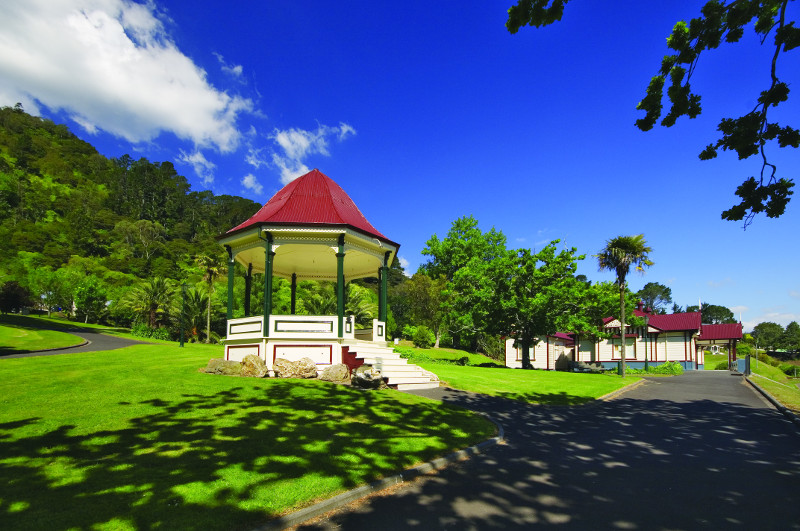 The pretty Domain parkland in Te Aroha. Image: Hamilton & Waikato Tourism
The pretty Domain parkland in Te Aroha. Image: Hamilton & Waikato TourismOver a coffee the Domain Cottage Cafe, we learn that Mount Te Aroha has always been considered a sacred place by Maori, and is said to have been named Mamoe Kahumata Te Aroha – the Mountain of Love – where Maori lovers would have their unions blessed in one of the hot springs rising from its base.
The town of Te Aroha was established when gold was discovered in the Waiorongomai Valley, on the eastern slopes of Mount Te Aroha, in 1880. Two years later, the hot springs and surrounding land were gifted to the Crown as a reserve by local Maori Chief Te Mokena Hau on condition Maori could continue to use the springs. Every day Mokena Geyser, named for the generous chief, produces around 28,000 litres of crystal-clear water naturally infused with sodium bicarbonate warmed to between 75 and 85°C.
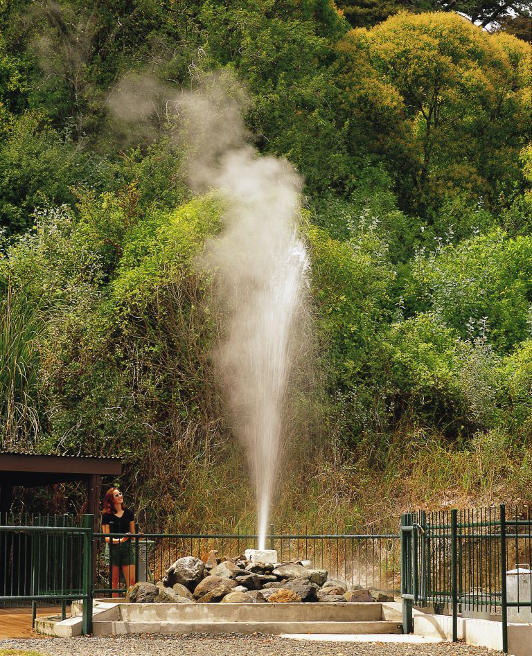 Mokena Geyser is named after a local Maori chief. Image: Hamilton & Waikato Tourism
Mokena Geyser is named after a local Maori chief. Image: Hamilton & Waikato TourismTe Aroha’s well-restored buildings date from the days when the town was New Zealand’s most fashionable spa town, its waters reputed to cure just about any malady. In the early 20th century, more than 30,000 bathers annually travelled by boat, coach and train – the railway came through town in 1886 – from across New Zealand, and beyond, to “take the waters”.
All very good reasons, we decide, to try out the world’s only hot soda water spa, situated in the Mineral Spa complex next door to the Domain Cottage Cafe. In no time we’re luxuriating in wonderfully toasty, non-smelly soda water in a large wooden tub, flicking on the pump every now and then for an aquatic massage of frothing bubbles.
Transported to Shangri-La for an hour, we emerge from the tub with rosy faces and silky smooth skin. Too relaxed to consider driving any further, we set out to find somewhere in Te Aroha to rest our contented heads.
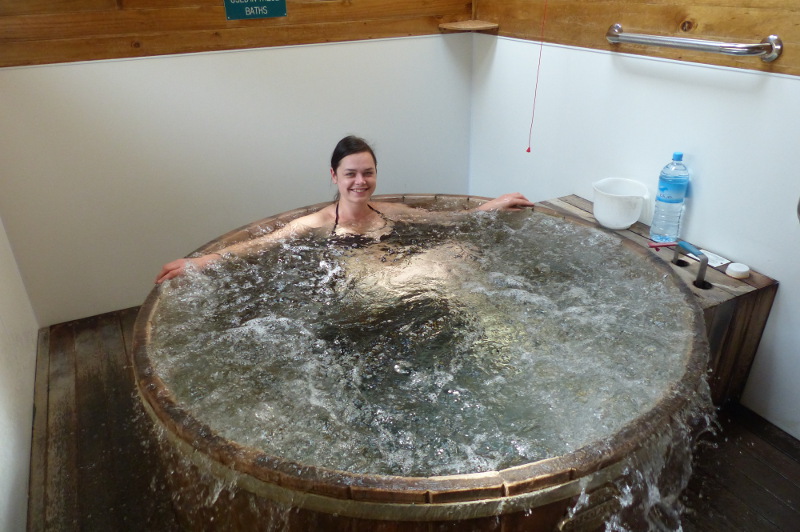 A toasty soda-water spa will take you to Shangri-La. Image: Sandy Guy
A toasty soda-water spa will take you to Shangri-La. Image: Sandy GuyFrom the 1880s, boarding houses, hotels, tea rooms and band rotundas sprang up in Te Aroha to accommodate the masses seeking a therapeutic spa cure. These days the town’s accommodation options include a former nunnery, several historic lodges, bed and breakfasts, motels and cute cottages. We opt for an original gold miner’s cottage called, creatively, The Goldminers’ Cottage, because it’s comfy, self-contained and a short stroll from the mineral spas and pretty Domain gardens.
The following day we check out Te Aroha’s Leisure centre, which has three pools: a big one for swimming, a shallower one for lounging and a very warm one for a good soak. We also visit the town’s small but fascinating museum, situated in a former thermal sanatorium. For those who don’t fancy lolling in hot springs all day, take a one-hour stroll around the Howarth Memorial Wetlands, a haven for bird life, or hire a bike from the Aroha Mt Lodge and cycle the popular Hauraki Rail Trail along the former rail line.
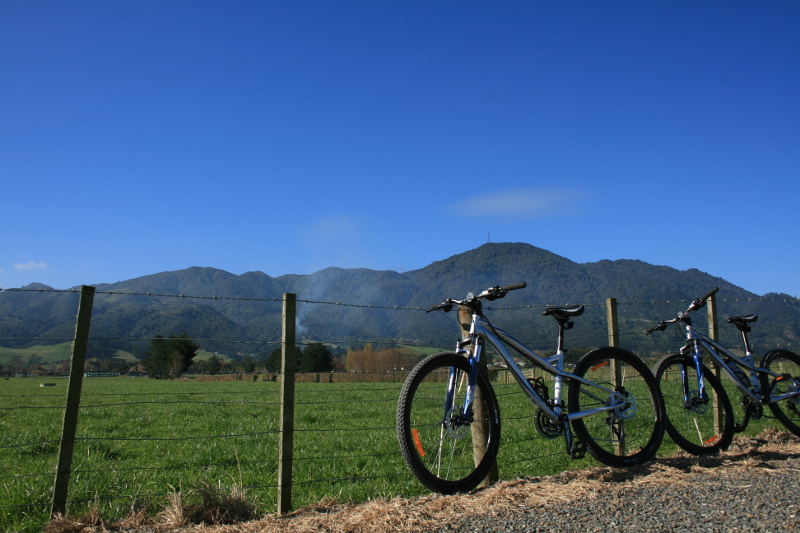 See the sights around Te Aroha on two wheels. Image: Getty
See the sights around Te Aroha on two wheels. Image: GettyTwenty minutes’ drive south of Te Aroha are the Wairere Falls, the North Island’s tallest waterfalls, where walks range from an easy-access, one-hour walking trail to a four-hour, advanced tramping track. Enthusiasts can trek to the summit of the Mountain of Love, a three-hour hike from Te Aroha’s Domain, for expansive views of the Waikato plains, snow-covered Mount Ruapehu, and the Bay of Plenty coast.
* Featured image: Driving into the pretty town of Te Aroha. Image: Getty


